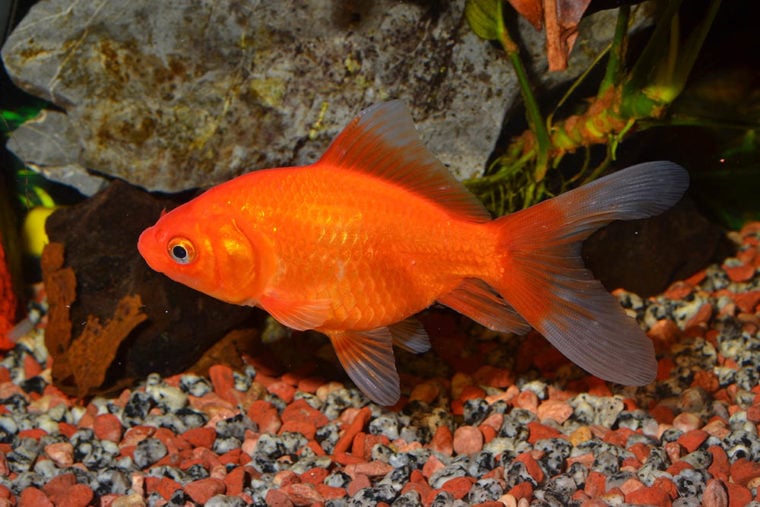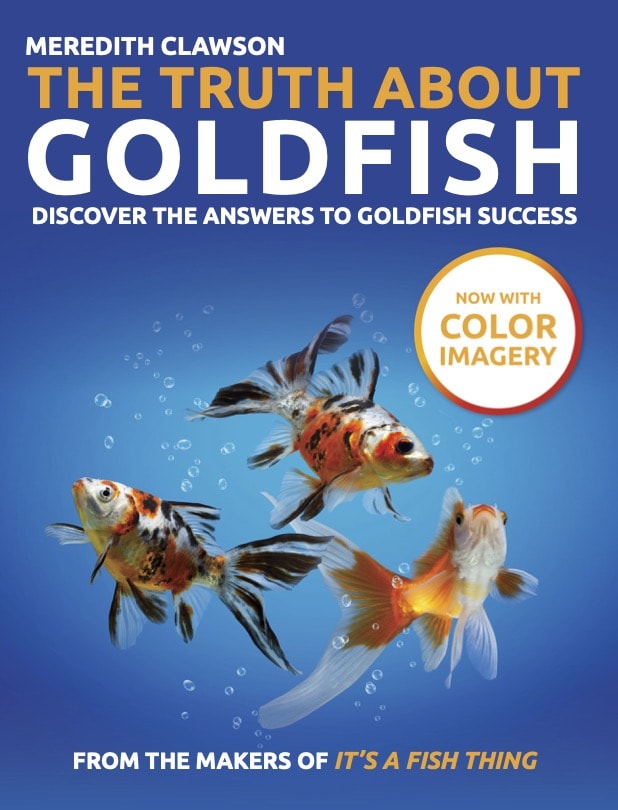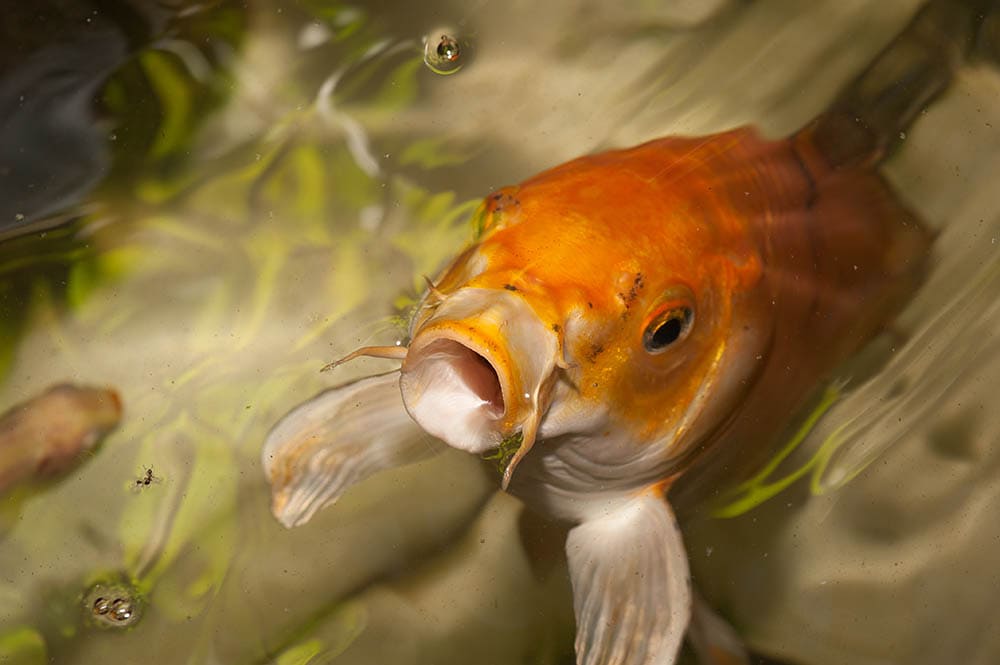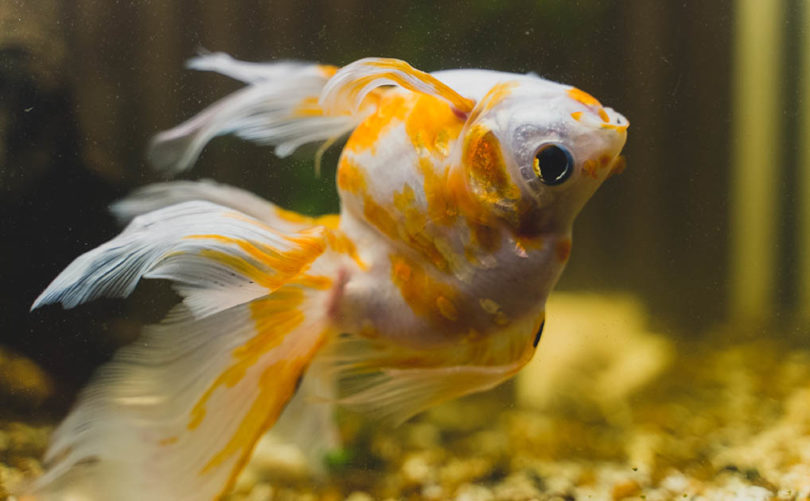
Common goldfish are among the oldest pet fish in history and remain a popular fixture in fishkeeping all over the world. Their name is a counterpart to the other variety of goldfish known as fancy goldfish. Common goldfish often lack the unique shape, morphology, and fin patterns that several variants of fancy goldfish possess. However, they are genetically the same species.
Common goldfish make exceptional pets and tank mates to other peaceful fish. They can be playful and learn to recognize the person who feeds them, even begging at the top or front of their tank when mealtimes come. Keep reading to learn more about the humble, common goldfish.
In many parts of the world, it may be possible to win a goldfish at a carnival, fair, or festival. We do not recommend or advise adopting a goldfish this way unless you can provide a suitable home for them. Legislation in recent years has led to some countries imposing a ban on having goldfish given as prizes at fairs or carnivals.
At Pet Keen, we do not encourage or recommend placing goldfish in bowls as it is very difficult to cater to their needs in such a setup. Goldfish are social, messy, large, and long-lived, and they should be kept in groups in aquariums large enough to house them. Please note that some cities, counties, and jurisdictions have passed legislation that prohibits housing them in bowls.
Quick Facts about Common Goldfish
| Species Name: | Carassius auratus |
| Family: | Cyprinidae |
| Care Level: | Easy |
| Temperature: | Optimum between 20 °C (68 °F) and 22 °C (72 °F) |
| Temperament: | Peaceful, Social |
| Color Form: | Orange, white, yellow, red and white, black and red, yellow and black, other combinations of these colors |
| Lifespan: | 15 – 20 years |
| Size: | 6” – 14” |
| Diet: | Pellets, flakes, gel food, live food, frozen food, roughage |
| Minimum Tank Size: | 55 gallons for a pair of juveniles. 75+ gallons for 2 adults. |
| Tank Set-Up: | Filter; Bare bottom, aquarium sand, or large smooth rocks; Goldfish-friendly plants; Smooth aquarium décor and hides |
| Compatibility: | Other common goldfish, Comet goldfish, or Koi (in a pond) |
Common Goldfish Overview

Common goldfish are a great choice for the new fishkeeper due to their widely available food and care supplies. There is a misconception that common goldfish don’t live very long lives, but with appropriate water quality and diet, they can live up to 20 years. The oldest common goldfish on record lived to be 43 years old!
They come in a wide variety of colors, and while the basic orange-gold color they most commonly sport may seem boring, watching their shimmery scales darting around an aquarium can be very aesthetically pleasing.
Common goldfish thrive in both indoor aquariums and outdoor ponds In nature, wild goldfish cousins (carp) are exposed to cold temperatures in the winter; common Goldfish in ponds can tolerate water as cold as 32 – 40˚F (0 – 4.4˚C).
They can thrive in a large variety of aquarium or pond setups as long as they receive routine water changes with treatments to remove toxins. They also need a high-quality, varied diet, and an environment they find stimulating, which can be anything from tank mates to various plants and decorations.
Common goldfish are foragers and need roughage to graze on, enjoying things like duckweed, cucumber, and live food. They may even eat aquarium plants, but usually leave plants like anubias, java fern, and hornwort alone.
How Much Do Common Goldfish Cost?
Common goldfish are sold at most pet stores for under $1 and can be up to $10 or more from online retailers, with prices usually varying based on size.
It’s important to keep in mind that even though the fish may be inexpensive, the initial setup cost of an aquarium, food, a water testing kit, and water treatments will all add to the price of being a goldfish owner. A basic setup for two common goldfish can be done for around $150 but can easily go into more hundreds for larger aquarium and filtration setups.
Typical Behavior & Temperament

Most common goldfish are peaceful fish, making great tank mates for other goldfish, but there are three exceptions to this.
Appearance & Varieties
Common goldfish have narrow bodies and short fins, coming in a variety of colors and combinations other than solid orange. They are most often solid orange or a combination of orange and black, but can also come in shades of red, yellow, and white. They usually are no more than two colors. Common goldfish differ from comets in very few ways; comets have longer tails and fins than common goldfish. Shubunkins are similar to comets but with longer tails and a calico coloration.
How to Take Care of Common Goldfish
Below are some key points you’ll want to take into consideration when becoming a goldfish owner.

Are Common Goldfish Good Tank Mates?
Generally speaking, common goldfish should only be housed with other common goldfish whenever possible. They can get along with Comets, Shubunkins, and Koi fish, assuming your pond is big enough to house all of them. Other tank mates are not advised. Tropical fish are not recommended, as they have different temperature requirements.
What to Feed Your Common Goldfish
Most goldfish foods are formulated with lifelong health in mind, but some fall short of meeting all dietary needs. A varied diet is recommended for goldfish, combining pellets with fruits and vegetables, especially roughage-like leafy greens. When using pellets and flakes, look for high-quality sinking food with minimal wheat or corn fillers containing marine proteins fish would encounter in the wild like shrimp and other fish.
Many goldfish die as a result of improper feeding, diet, and/or portion sizes – which can be easily prevented by proper education. That's why we recommend the best-selling book, The Truth About Goldfish, which covers everything about goldfish nutrition, tank maintenance, illnesses & more! Check it out on Amazon today.

Omega-One Goldfish Pellets and Northfin Goldfish Pellets are readily available, high-quality pellets. Repashy Super Gold gel food mix is another high-quality food option that requires some preparation. Frozen foods like bloodworms, brine shrimp, and daphnia are great treats for fish.
- You might also be interested in: 10 Best Earrings for Goldfish Fans
Keeping Your Common Goldfish Healthy
Keeping common goldfish healthy can be easy as long as a healthy diet is provided and water quality is maintained. It’s important to purchase a water test kit, to stay on top of water parameters like ammonia, nitrite, nitrate, and pH. Removing waste from the water, performing water changes routinely, and keeping the water at a comfortable temperature for your goldfish will keep them happy and healthy.
Finding a veterinarian who cares for goldfish can be challenging, so start by calling exotics and agricultural vets in the area to get more information.
Breeding
If adult goldfish have been kept in cold water long enough to go into torpor, when they are reintroduced to warm water they will often begin attempts at spawning.
A 3:1 male-to-female ratio is recommended to increase the chances of egg fertilization and gradually increasing the light (if indoors) to around 14-16 hours per day is recommended for breeding. It may be necessary to increase feeding to stimulate egg production.
Fertilized eggs should be moved to a different tank to prevent them from being eaten. If some eggs do manage to survive with the fish, the fry will almost certainly get eaten.
Related read:
Conclusion
Who knew that common goldfish could be so complex? While it may sound like a lot, and does require some work, goldfish are a great choice for fish keepers of all levels due to their longevity and availability.
Common goldfish can provide you with a sense of satisfaction and are a pleasant addition to your family tank or pond. There is a level of fun and excitement testing new vegetables with goldfish and seeing their preferences and personalities come out. Common goldfish should be a long-term commitment and it’s important to remember that they are living things, not disposable short-term entertainment. They will likely be with your family for over a decade, so be prepared to give them the best life possible.
See also:
- Feeding Goldfish Fry: Complete Care Guide With Schedule
- Can Goldfish Live with Guppies? We’ve Got the Answers!
Featured Image Credit: JuanCarlosPalauDiaz, Shutterstock










